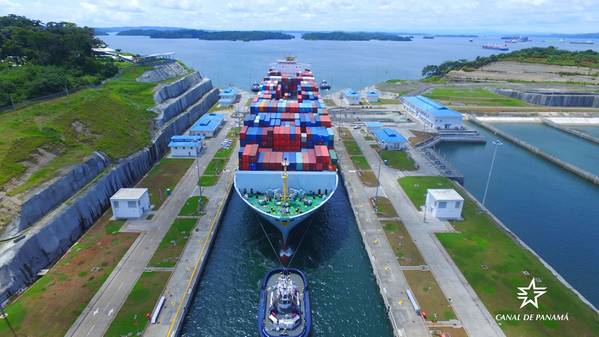As the Panama Canal prepares to welcome its 300th LNG vessel transit in March 2018, there will be two things of which I am certain. First, we’ve enjoyed considerable progress since the first LNG vessel entered our waterway and, second, the future of this burgeoning segment couldn’t be brighter.
Indeed, when I consider that the Panama Canal began transiting LNG vessels just 20 months ago, in July 2016, I’m grateful for the approach our operations team took to realise this growth safely and reliably, and for our customers as we similarly continue to grow our partnership together.
Currently, of the seven booking slots offered daily to Neopanamax vessels, the Panama Canal allows one to be allocated to an LNG vessel each day. This decision was made after careful market analysis and operational consideration, and to allow our pilots to acquire enough experience to safely and confidently transit vessels from this market segment, new to the historic waterway.
This capacity has been more than commensurate to existing demand, as we have yet to average one LNG transit per day or have any LNG vessels experience extensive delays waiting to transit.
As the Panama Canal has gained experience in understanding the nature of the LNG trade, we realise our customers are looking for greater flexibility. In June 2017 we were able to successfully transit two LNG vessels in the same direction in one day.
We began to implement this initiative as a routine practice in December 2017, to handle the seasonal LNG demand and working in close co-ordination with our customers. To date, we have been able to transit two LNG carriers in one day 13 times, and plan to continue to do so whenever the vessel mix allows it.
And, with the rising demand and plans for US exports to increase, we need to continue to do so. Compared to the 2017 fiscal year, we expect LNG traffic through the waterway to grow by 50% this fiscal year. This means LNG carrier transits will increase from 163 transits registered in the 2017 fiscal year to approximately 244 LNG carrier transits in the 2018 fiscal year, which ends 30 September.
Fortunately, we’ll be ready. Thanks to the data and experience we have gained thus far, we will soon be able to lift some of the transit restrictions on these vessels. This will keep us ahead of demand and allow us to accommodate demand surges as needed.
Panama’s operation of the Canal has always been defined by a commitment to planning, safe and reliable service, and continued innovation and growth. Our approach to the LNG segment remains no different.
As we balance the safety of our operations with a new and growing market, we look forward to working closely with our customers, who we realise are increasingly looking for certainty in an otherwise uncertain market.
Another thing I am sure of? That the Canal and its customers will continue to work together to ensure LNG flows smoothly through our waters, and that we’ll do so with one eye fixed towards the future.




